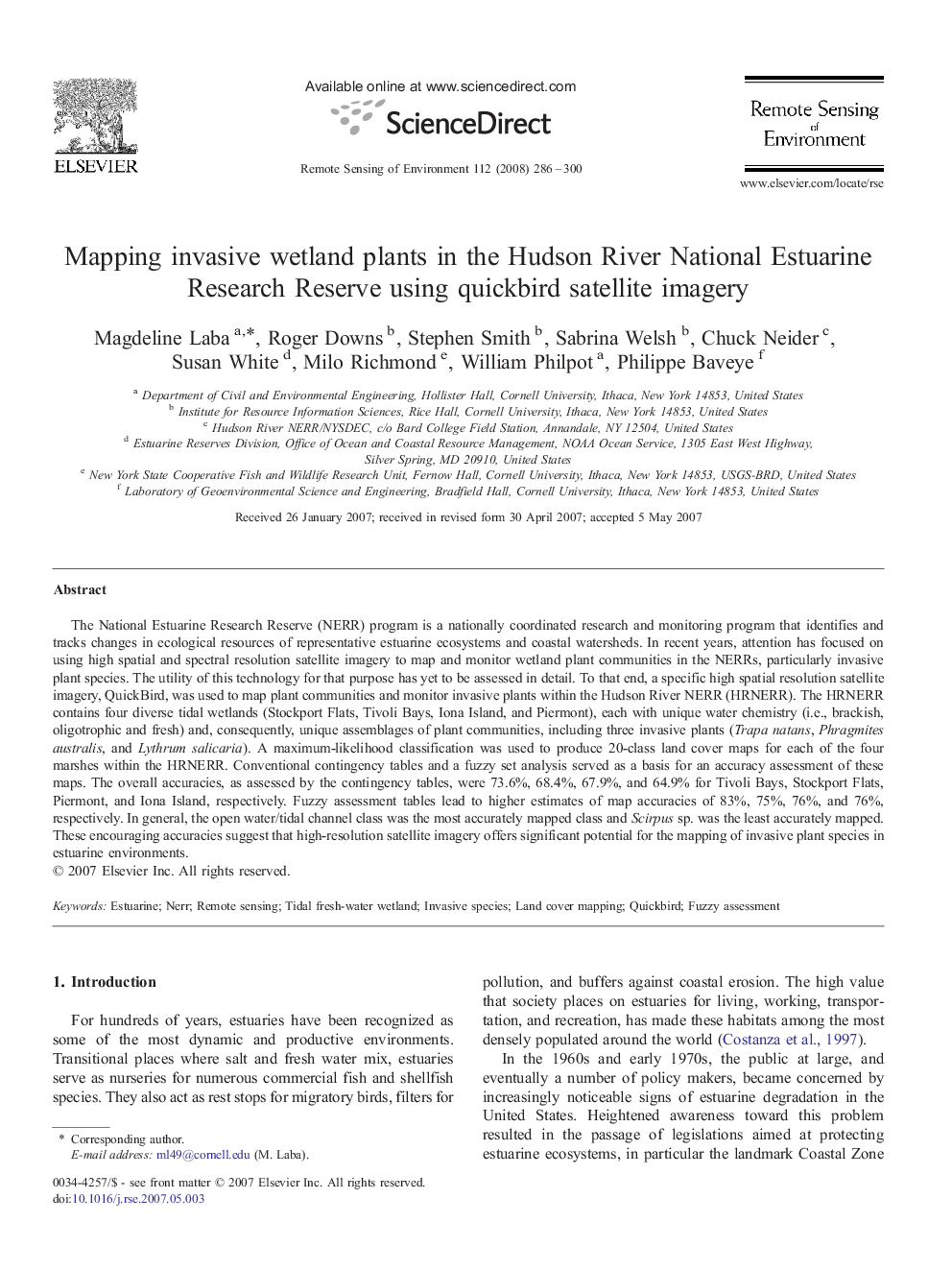| کد مقاله | کد نشریه | سال انتشار | مقاله انگلیسی | نسخه تمام متن |
|---|---|---|---|---|
| 4460552 | 1621333 | 2008 | 15 صفحه PDF | دانلود رایگان |

The National Estuarine Research Reserve (NERR) program is a nationally coordinated research and monitoring program that identifies and tracks changes in ecological resources of representative estuarine ecosystems and coastal watersheds. In recent years, attention has focused on using high spatial and spectral resolution satellite imagery to map and monitor wetland plant communities in the NERRs, particularly invasive plant species. The utility of this technology for that purpose has yet to be assessed in detail. To that end, a specific high spatial resolution satellite imagery, QuickBird, was used to map plant communities and monitor invasive plants within the Hudson River NERR (HRNERR). The HRNERR contains four diverse tidal wetlands (Stockport Flats, Tivoli Bays, Iona Island, and Piermont), each with unique water chemistry (i.e., brackish, oligotrophic and fresh) and, consequently, unique assemblages of plant communities, including three invasive plants (Trapa natans, Phragmites australis, and Lythrum salicaria). A maximum-likelihood classification was used to produce 20-class land cover maps for each of the four marshes within the HRNERR. Conventional contingency tables and a fuzzy set analysis served as a basis for an accuracy assessment of these maps. The overall accuracies, as assessed by the contingency tables, were 73.6%, 68.4%, 67.9%, and 64.9% for Tivoli Bays, Stockport Flats, Piermont, and Iona Island, respectively. Fuzzy assessment tables lead to higher estimates of map accuracies of 83%, 75%, 76%, and 76%, respectively. In general, the open water/tidal channel class was the most accurately mapped class and Scirpus sp. was the least accurately mapped. These encouraging accuracies suggest that high-resolution satellite imagery offers significant potential for the mapping of invasive plant species in estuarine environments.
Journal: Remote Sensing of Environment - Volume 112, Issue 1, 15 January 2008, Pages 286–300